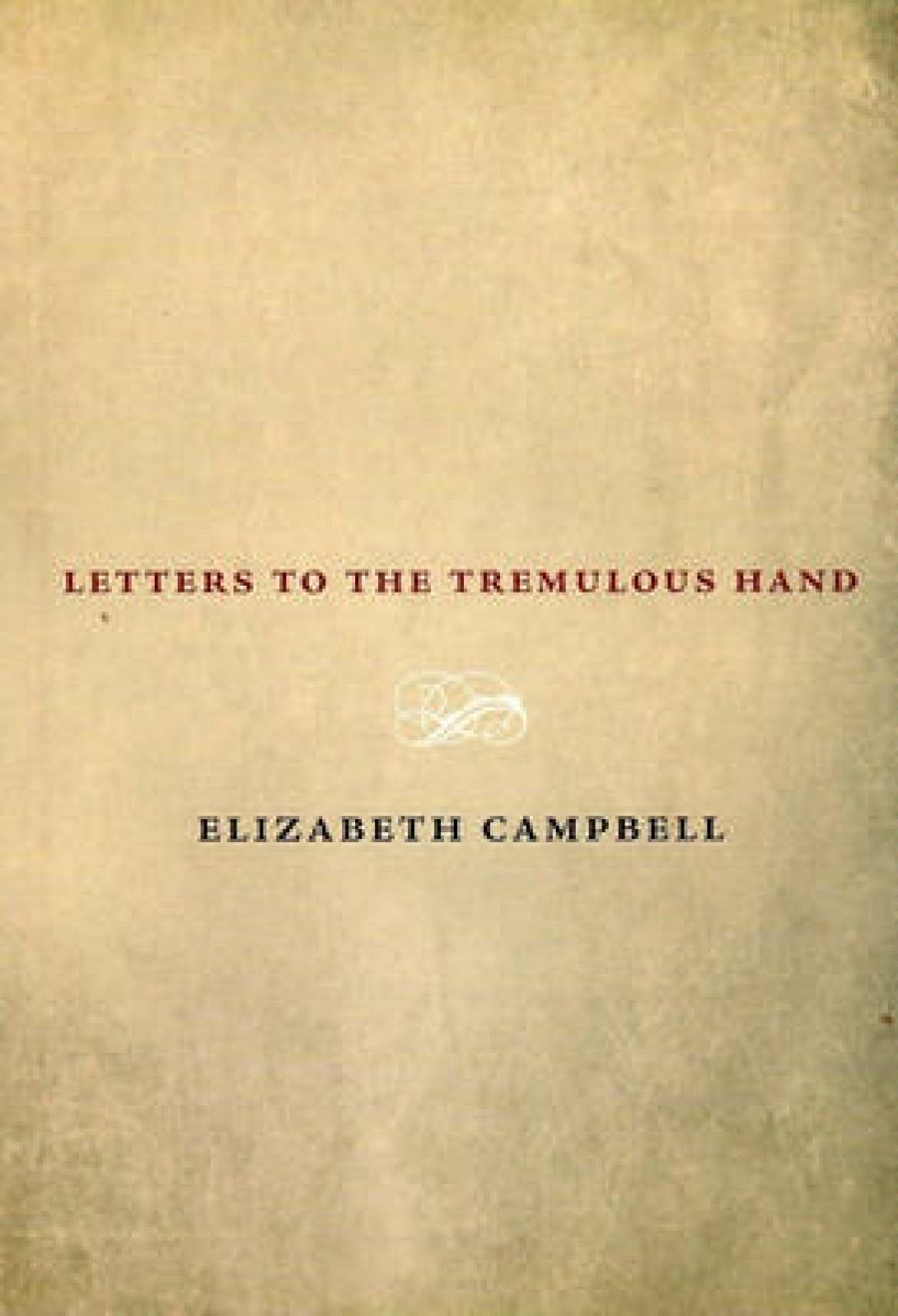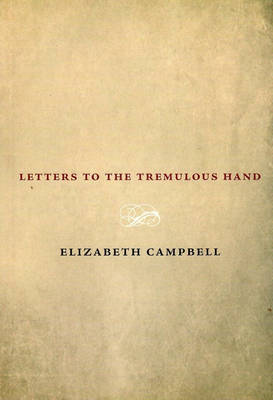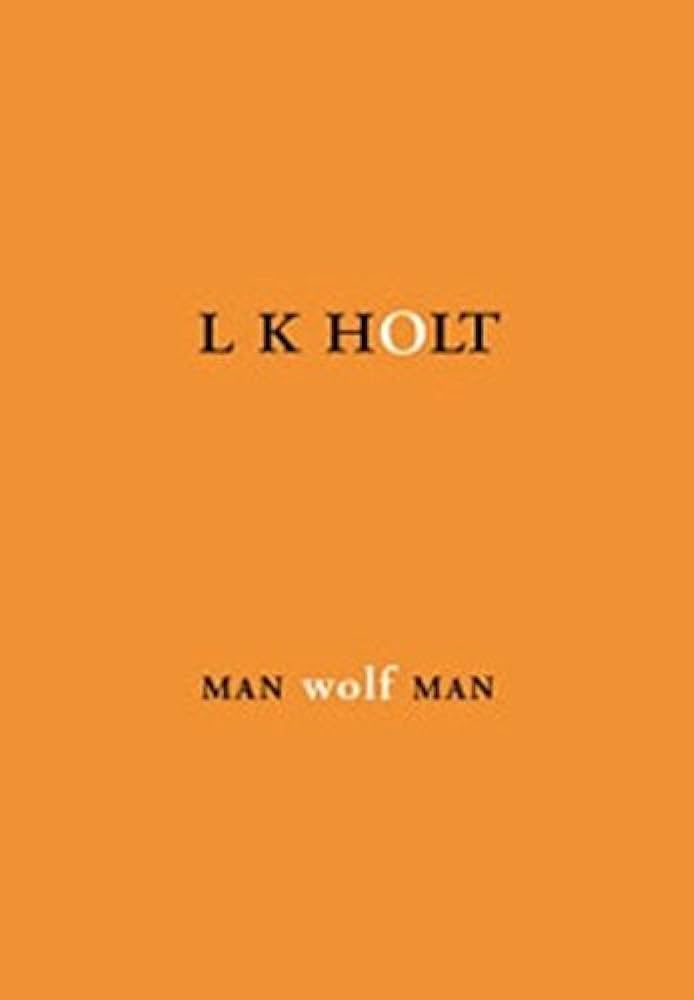
- Free Article: No
- Contents Category: Poetry
- Custom Article Title: Generation of '08?
- Review Article: Yes
- Article Title: Generation of '08?
- Online Only: No
- Custom Highlight Text:
John Leonard Press produces beautiful books of poetry. Proof of the editor’s precise standards, L.K. Holt’s Man Wolf Man features a fine, bullet-sized insignia of a wolf man’s head after the title page. But as Leonard has shown in publishing three (out of four) first books by young Australian women poets, he is not bound to tradition. Holt’s book, with its combination of formal style and feminist obscenity, and Elizabeth Campbell’s Letters to the Tremulous Hand, which includes poems about medieval scribes and human trafficking, suggest that Leonard’s aesthetic is more radical than most. Could it be time for young Australian women poets to shine? Are these two poets among the bright young things of a Generation of ’08?
- Book 1 Title: Letters to the Tremulous Hand
- Book 1 Biblio: John Leonard Press, $23.95 pb, 76 pp
- Book 1 Cover Small (400 x 600):

- Book 1 Cover (800 x 1200):

- Book 2 Title: Man Wolf Man
- Book 2 Biblio: John Leonard Press, $23.95 pb, 78 pp
- Book 2 Cover Small (400 x 600):

- Book 2 Cover (800 x 1200):

Other poems depict men’s violence against women. ‘Unfinished Confession’, a sequence of ekphrastic poems, evokes ‘quacks’ with ‘manila / folders, neo-vaginas, stroking cats’ and the ‘sad little Übermenschen’ who ‘deny our places and means of birth’. In ‘Glove Story: Paraphrased’, another ekphrastic series, the beheaded Venus, cupping her pubis, speaks ‘from the roséd sea / from a surface of embers’: ‘it is you masturbating not I.’ Holt’s poetry, as these examples suggest, regularly engages with art and history. In ‘His Name is Louis Althusser’, Holt turns to cultural theory, depicting the Marxist philosopher, who murdered his wife, and his peculiar invulnerability to being ‘hailed’ as a criminal.
In ‘Man is Wolf to Man’, even the corpse of a soldier, like the finger in ‘Slaughter House’, is not innocent. The soldier’s corpse, ‘like an amulet’, provides a ‘counterweight’ to ‘the deaths by his hand’. Beauty has no place in this world, in which ‘Dusk is useless’ and only ‘light for aim, or the cover of black’ is of value. However, beauty certainly has a place in the poem, which makes exceptional and disciplined use of imagery and rhyme. The invisible work of a woman presumably informs the claustrophobic final lines: ‘Sometimes the enemy knocks before / entering. A baby is hidden in the drawer.’
‘Long Sonnets of Leocadia’, another ekphrastic sequence, is another highlight of a collection perhaps thematically united by an insistent connection of the sublimity of death with the earth and art. The female narrator of the poems, Goya’s mistress, reflects on the work of this ‘madman / swallowing his tongue, his eyes rolled back in black crayon’, who paints ‘a monk planting a sprig of fright / in the peasant’s ear, her teeth mostly gone’.
While not every poem is strong, enough are rich and risky. Like the witch portrayed in ‘The Ontological Whore’, Holt has ‘pissed on the Book in her Sunday best’.
Elizabeth Campbell’s Letters to the Tremulous Hand is a very different first collection from Holt’s, but it is similarly uniquely and confidently voiced. Campbell’s poems are marked precisely by a spirit of melancholy, providing meditations on the worldly things that arouse desire, such as loss and literature. While she writes in free verse, the poems, with their emphasis on the metaphysical and their frequently archaic subject matter, often seem to belong to another time. The poems are also distinguished by a lightness and discipline in their composition.
Perhaps not surprisingly, the collection contains a number of poems about music. In ‘Making Dough with John Dowland’, about the Renaissance English lutenist and songwriter, the poet moves from a speculation on the intangibility of God and death to a representation of music as profane and sexual: ‘fat lute – agile, sticky-fingered, it / gets in everywhere.’
Horses are another interest of the poet’s, and they often appear as tragic or divine figures. The horse poems, despite Campbell’s trademark metaphysical bent, are some of the most physically grounded poems in the collection, as is the engaging and image-rich ‘Illuminations’. Ostensibly an ekphrastic poem detailing medieval representations of sin, ‘Illuminations’ is superbly surrealist: ‘A French lady / adjusts the robes of a unicorn held / by a monkey whose rich commissioner kneels / before his saviour on the first page.’
Also excellent is the sequence called ‘Passengers’, which reflects on the frailty of life and human certainties, on transience and transition. Human traffic, ‘those seeking / legal death, sex, contraband, illegal work’, is blown, like cobwebs, on ‘unseen / transnational winds’. There is the striking observation: ‘In a land that never refers to you, it’s you who sees / the night figure by the road / move through several shapes – person, / three carrying child bicycle camel rock’.
The eponymous sequence is also worthy, demonstrating Campbell’s careful approach to writing and to what it might represent. One of the poems reflects: ‘Look how the night goes down / Without our help.’ Campbell holds up against this not only a medieval scribe’s but her own tremulous writing.


Comments powered by CComment